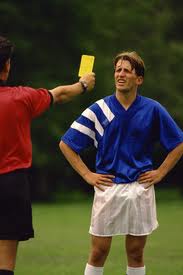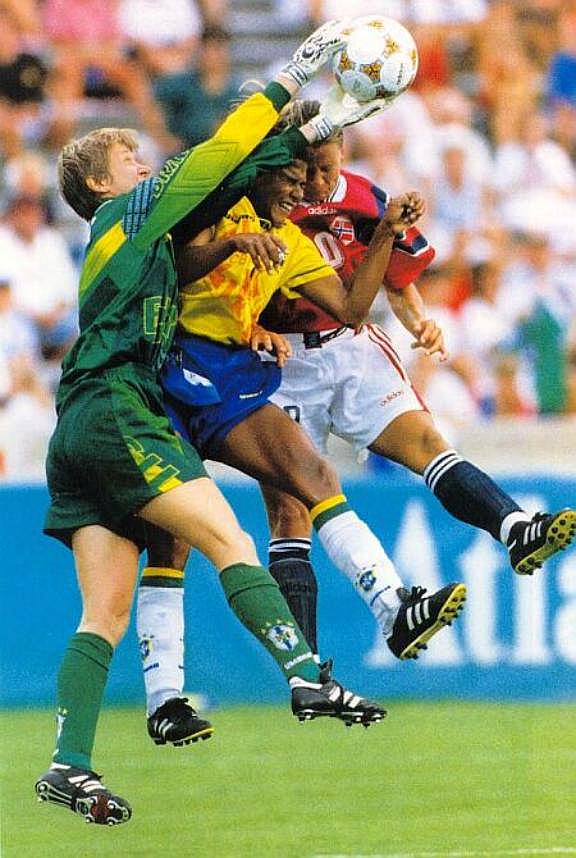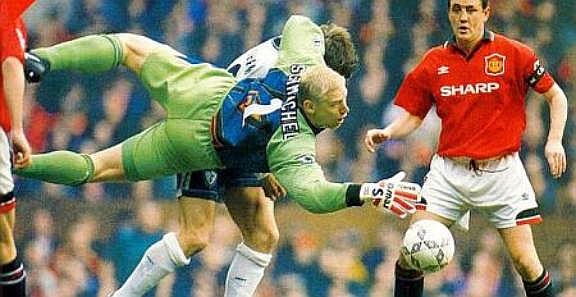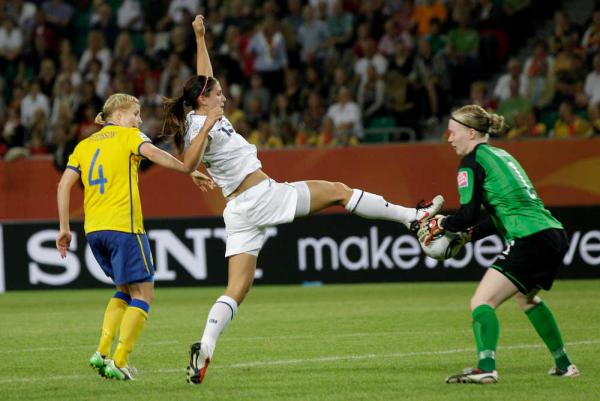| |
 |
THE GOALKEEPER & THE LAW
Andrew Castiglione
Founder of Ken Aston Referee Society
 |
The goalkeeper in his or her own 44 x 18, penalty area:
Enjoys use of hands;
 -
After a save, is given 6 seconds to put the ball back into play;
-
After a save, is given 6 seconds to put the ball back into play;
 -
Has a unique shirt;
-
Has a unique shirt;
 -
And, must obey certain restrictions (i.e. taking ball in hands from kick
by teammates, teammate throw-in, etc...).
-
And, must obey certain restrictions (i.e. taking ball in hands from kick
by teammates, teammate throw-in, etc...).
But, once we get past these special provisions, the keepers are just
like the other players...
...Or are they?

An important skill of officiating is the recognition that, within their
own penalty area, the goalkeeper is never just like the other players.
Special care and attention must be applied at every level, every time
the ball is played near the keeper.
The Goalkeeper & Safety
The Referee must scrutinize every charge against the goalkeeper and call
any infringement (Law 12). If a charge is careless, reckless or done
with excess force it is a direct free kick offense. If play is dangerous
or opponent prevents keeper from putting ball in play it is an indirect
free kick offenses. In all cases, the Referee must recognize and punish
any offense, which is clearly against the letter of the Law.
Remember, the only fair charge allowed under the Laws is
shoulder-to-shoulder. If a goalkeeper is flat on the ground, or
stretched out exposing vital organs, face or fingers, then a charge
using a foot is not fair. Whistle to stop play. It may be a free kick at
a minimum. If thought unsporting, it may necessitate a caution (yellow
card), or if serious foul play/violent conduct is involved, a send-off
(red card).

If the keeper has only one finger on the ball, then
attackers must back off. Referees need to be particularly
alert to illegal charges here. Good mechanics at the youth level mean
the referee must be on top of the situation have a clear view as the
play develops, and be prepared for a quick whistle to prevent injury.
Even if the keeper's hands are close - safety for the keeper
is the most important consideration.
Between a goalkeeper and a player, a so-called "50-50 ball", usually is
not. Often it means an attacker throws his foot, leg or
body at the keeper, presumably with the ball in mind? Keepers have
doubts!!!
In the youth program such collisions between young children means an
unnecessary risk of injury.
A keeper's hand against an attacker's foot, leg or body is
not 50-50. It is not fair, not balanced, it is just not right. It must
be stopped immediately. Further repetition by anyone, must be dealt with
severely.

We all know that soccer is a tough, physical, combative contact sport.
But is also by Law, tradition and spirit of the game: fair and sporting.
This A # 1, top of the list, priority for kids means: keeping the keeper
healthy! All Referees at the youth levels have a responsibility to help
coaches, parents and players to learn the skills of the game of soccer
in a safe, sane, sporting environment. Players in harm's way do not
learn proper technique.
This is different from professional or high level adult play. Both the
keepers and players at the higher levels develop the skills and
techniques to minimize injury and protect themselves. Younger players
have not. This is why youth soccer must be safety first. That begins
with the most vulnerable person on the field - the goalkeeper.
 
Here are some guidelines to help you ensure the safety of
the keeper and promote the Spirit of the Game at the youth level:
 -
1.
Most important, Referees need to be close to such anticipated action...
Stay alert!
-
1.
Most important, Referees need to be close to such anticipated action...
Stay alert!
 -
2.
Attackers who put keepers at risk must be warned, penalized
if necessary; served a yellow or red card if necessary.
-
2.
Attackers who put keepers at risk must be warned, penalized
if necessary; served a yellow or red card if necessary.
 -
3.
If the keeper is unfairly charged head on, from the rear, by a foot or
by a feet first challenge, then referees are expected to protect the
keeper, stop play, and deal with it! Because of the exposure the keeper
risks, referees must give the benefit of the doubt to the keeper.
-
3.
If the keeper is unfairly charged head on, from the rear, by a foot or
by a feet first challenge, then referees are expected to protect the
keeper, stop play, and deal with it! Because of the exposure the keeper
risks, referees must give the benefit of the doubt to the keeper.
 -
4.
Kicking at a ball near a keeper's face or head, while she or he is on
ground is not sporting. In fact if contact with the face is made, the
forward may very well receive a red card for serious foul play.
-
4.
Kicking at a ball near a keeper's face or head, while she or he is on
ground is not sporting. In fact if contact with the face is made, the
forward may very well receive a red card for serious foul play.
 -
5.
Keepers are open to injury simply by the nature of their position. Never
mind foul play. That's more jeopardy.
-
5.
Keepers are open to injury simply by the nature of their position. Never
mind foul play. That's more jeopardy.
 -
6.
Coaches, players and referees must be sensitive to this fact and behave
and advocate safe play: when contact around the goalkeeper is at issue.
Coaches must teach responsible challenges. Players must learn to back
off. It is a soccer community effort to do the right thing.
-
6.
Coaches, players and referees must be sensitive to this fact and behave
and advocate safe play: when contact around the goalkeeper is at issue.
Coaches must teach responsible challenges. Players must learn to back
off. It is a soccer community effort to do the right thing.
 -
7.
Referees must admonish any potentially risky behavior. Stop any action
that threatens the well-being, health and safety of the keeper.
-
7.
Referees must admonish any potentially risky behavior. Stop any action
that threatens the well-being, health and safety of the keeper.
 -
8.
Referees must intervene, perhaps to call fouls, issue cards or send off
(red card) players who: abuse goalkeepers, infringe the laws, flout the
spirit of the game, and also defy common sense.
-
8.
Referees must intervene, perhaps to call fouls, issue cards or send off
(red card) players who: abuse goalkeepers, infringe the laws, flout the
spirit of the game, and also defy common sense.
|